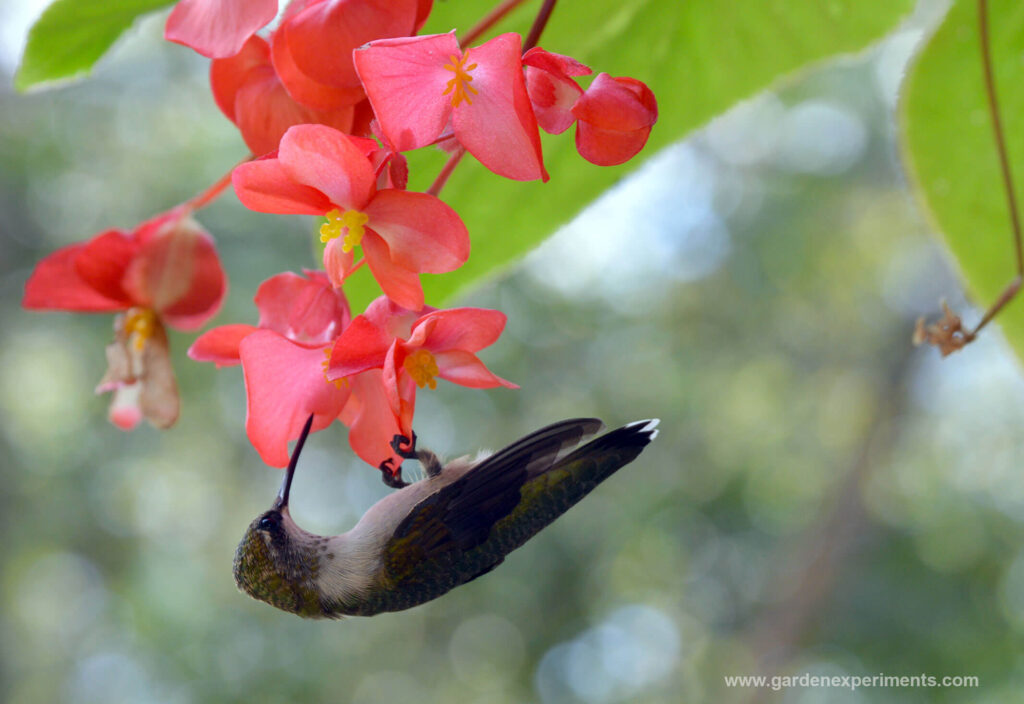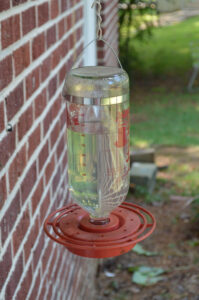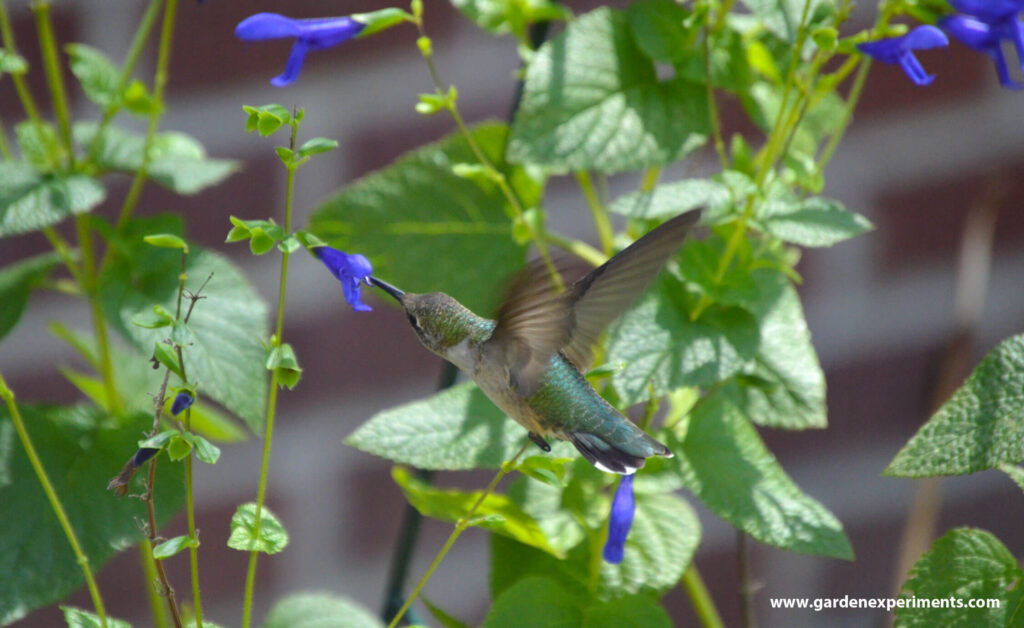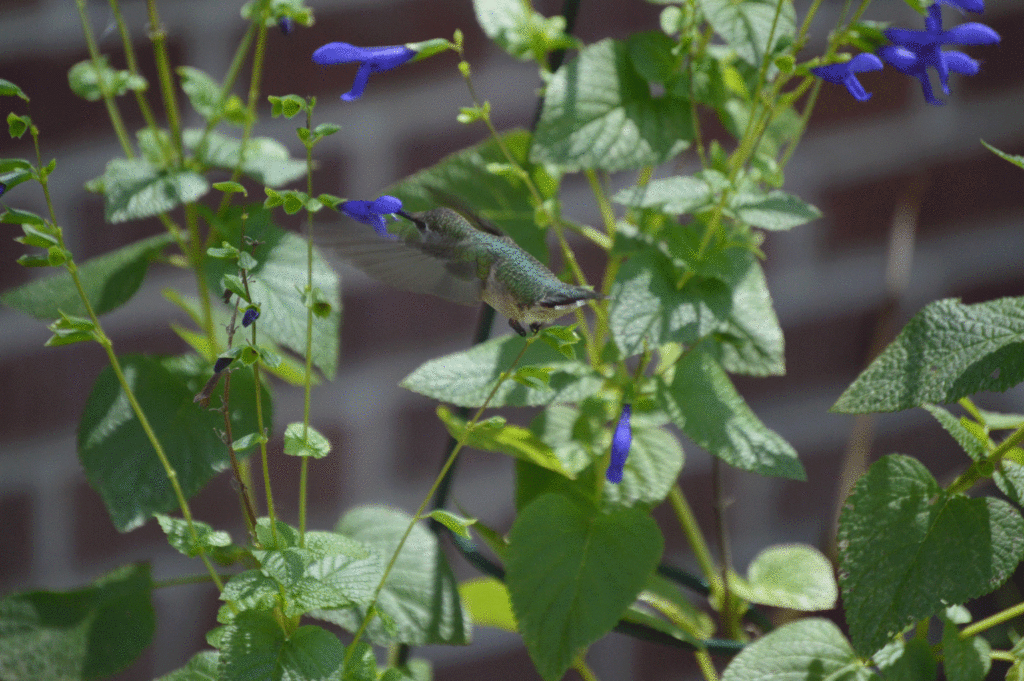The fall migration of hummingbirds is underway, so you might be seeing more of the tiny birds in your garden this month if you live in the Southeast. Male hummingbirds are the first to migrate, followed by immature males and females. So keep an eye out for that flash of a ruby throat and keep your ears open for the buzz of their wings.
This lovely little bird was visiting me this week during lunch time. He landed just about a foot and a half away from me to feed on my angel wing begonia in a handing basket. What a great lunchtime guest!

Feeding Hummingbirds in Fall

Keep your feeders full this fall and keep them up for about a week or so after you’ve spotted the last bird in your yard. Sometimes a straggler will come through a little later and that feeder may be a welcome food source for it.
Keeping your feeders up into late fall will not prevent hummingbirds from migrating. Day length, temperature, and other cues will signal to the birds that it is time to head south.
Don’t leave your feeders out all winter though, as they will get very dirty and if the water freezes in them, they may crack and leak the next time you want to use them. I made that mistake last winter and my favorite feeder has been leaking some all summer.
If you’re not sure which hummingbird feeder to get for your garden, check out my detailed review of four types of hummingbird feeders.
Hummingbird Food Recipe
Making food to fill your feeders is very easy. Just mix 1 cup white sugar to 4 cups of water, bring it to a boil and then allow to cool before filling your feeders. You don’t need to add any food coloring and do not use brown sugar, molasses, honey or other sweetener. Fill up your feeder with enough for 2-3 days and then store the rest in the refrigerator for future use (up to one week). Allow the sugar water to warm up to room temperature before putting it back out in your feeders.

Storing Your Feeders
Before you put your feeder away for the winter, take it apart and give it a good scrubbing with a mixture of vinegar and water. A bottlebrush and a pipe cleaner can help you get those hard to reach places and clean out the feeding ports. Don’t use bleach or soap to clean your feeders as the residue may remain on the feeder and may be harmful to the birds.
Hummingbird Resources
Here are some other resources about hummingbirds. I had to check out the first one to see if my visitor was a female or juvenile male.
- Identifying male, female, and immature male ruby-throated hummingbirds
- Check out this migration map for Fall 2015: https://www.learner.org/jnorth/maps/humm_fall2015.html
- Audubon page on feeding hummingbirds
Here’s an animated gif I made from some of the photos I took in my garden of the hummingbirds feeding on the blue anise sage (Salvia guaraniticia).

